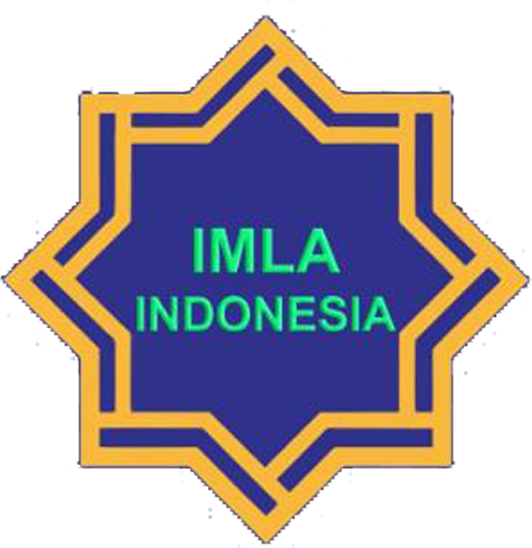The Impact of Using the Intermediate Language on Teaching Arabic to Non-Arabic Speakers/ أثر استخدام اللغة الوسيطة في تعليم اللغة العربية للناطقين بغيرها
Abstract
The main objective of teaching any foreign language is to enable the learner to employ the four language skills (reading, writing, listening, and speaking); In order to develop these skills, the teacher must choose the appropriate teaching methods and employ them during the educational process. This study aims to examine one of the most important strategies and issues directly related to teaching Arabic as a foreign language. The most controversial between specialists and professionals in this field is the Intermediate language and the effectiveness of using this language in teaching Arabic to non-native speakers in language skills: speaking, listening, and reading, and writing. Between supporters and opponents, this issue remained the subject of controversy and endless discussion about its use or lack of assistance. In this study, the descriptive qualitative approach was applied. The study population consists of bachelor students of non-native speakers of the Arabic language at the State University of Malang. Their number is (15) learners in the first and second levels in the academic year 2020/2021. The study reached the following results: There is no effect of the intermediate language on teaching reading and writing skills for the first and second levels, while there is an effect of the intermediate language on the skills of listening and speaking for the second level.
Keywords
Full Text:
PDF (العربية)References
Abdalla, A. E., & Abas, H. N. H. H. (2020). The Code Switching in Communication Among Arabic Speakers at the Sultan Sharif Ali Islamic University in Brunei: An Exploratory Study/ التحول اللغوي في التواصل بين متحدثي اللغة العربية في جامعة السلطان الشريف علي الإسلامية في بروناي: دراسة استطلاعية. Al-Arabi: Journal of Teaching Arabic as a Foreign Language, 4(2), 259–276. https://doi.org/10.17977/um056v4i2p259-276
Afifah, N., Fauzi, M. F., Anindiati, I., & Nurdianto, T. (2020). The Implementation of Mimicry Memorization Method for Novice Students in Learning Arabic Mufradat. Jurnal Al Bayan: Jurnal Jurusan Pendidikan Bahasa Arab, 12(2), 263–280. https://doi.org/10.24042/albayan.v12i2.5953
Al-‘Aidan, A. R., & Darwisy, R. (1997). Istiratijiyyat ta’lim al-lughah al-‘Arabiyyah bi washfiha lughah tsaniyah. Majallah Umm Al-Qura, 16.
Al-Fa’uri, A., & Iwadh, A. (2012). Atsar istikhdam al-shurah fi ta’lim al-lughah al-‘Arabiyyah li al-nathiqin bi ghairiha fi al-Jami’ah al-Urduniyyah. Dirasat: Human & Social Sciences, 39(2), 275–284.
Alhamami, M. (2015). Teaching science subjects in Arabic: Arab university scientists’ perspectives. Language Learning in Higher Education, 5(1), 105–123. https://doi.org/10.1515/cercles-2015-0006
Ali, H. H. E., & Dana, A. M. A. Y. (2020). The Bridging Language between Diglossia of Classical and Colloquial Arabic اهملعت ىلع لابقلإا اذه لاز امو ، اهب نيقطانلا دودح جراخ ةيفاقث ةنميهو دادتما ةيبرعلا ةغللا ملعت ىلع لابقلاا ديازت ةريخلأا تاونسلا يفف ، اهئانبأ ريغ نم ادوهشم ى لإ رفسلا ىلإ برعلا ر. Al-Arabi: Journal of Teaching Arabic as a Foreign Language, 4(2), 130–162. https://doi.org/10.17977/um056v4i2p130-162
Aziz, A. A., Ibrahim, M. A., Shaker, M. H., & Nor, A. M. (2016). Teaching Technique of Islamic Studies in Higher Learning Institutions for Non-Arabic Speakers: Experience of Faculty of Quranic and Sunnah Studies and Tamhidi Centre, Universiti Sains Islam Malaysia. Universal Journal of Educational Research, 4(4), 755–760.
Baglama, B., Yucesoy, Y., & Yikmis, A. (2018). Using animation as a means of enhancing learning of individuals with special needs. TEM Journal, 7(3), 670.
Fauzi, M. F., & Anindiati, I. (2019). Tathwir al-Lughaz al-Raqmy li Madah al-Tathbiq Al-Sharfy 1 ‘ala al-Hatif al-Mahmul ka al-Tadribat al-Idhafiyyah Kharij al-Fashl al-Dirasy. Buletin Al-Turas, 25(1), 129–139. https://doi.org/https://doi.org/10.15408/bat.v25i1.11506
Fauzi, M. F., & Anindiati, I. (2020). E-Learning Pembelajaran Bahasa Arab. UMM Press.
Fauzi, M. F., Buhun, M. F., & Purwadi, A. (2019). The Influence of Teams Games Tournament (TGT) toward Students’ Interest in Arabic Language Learning. Izdihar: Journal of Arabic Language Teaching, Linguistics, and Literature, 2(2), 135–148. https://doi.org/https://doi.org/10.22219/jiz.v2i2.9986
Fitriyah, T., & Fauzi, M. F. (2020). Improving Quality of Arabic Translation Course through Jigsaw Cooperative Learning. Izdihar: Journal of Arabic Language Teaching, Linguistics, and Literature, 3(1). https://doi.org/10.22219/jiz.v3i1.11033
Louber, I., & Troudi, S. (2019). “Most of the Teaching is in Arabic Anyway”, English as a Medium of Instruction in Saudi Arabia, Between De Facto and Official Language Policy. International Journal of Bias, Identity and Diversities in Education (IJBIDE), 4(2), 59–73. https://doi.org/10.4018/IJBIDE.2019070105
Mohamad, G. M. (2020). Dauru Al Internit Fi Tahsini Maharati Al Tadrisi Min Wijhadi Nadzari Asatdzati Wa Al Tullabi Al Dirasati Al Ulya Bi Jamiati Malang Al Hukumiyyah. Al-Arabi: Journal of Teaching Arabic as a Foreign Language, 3(2), 99–120. https://doi.org/10.17977/um056v3i2p99-120
Qomariyah, L., & Ahya, A. S. (2020). Al-Khudhu’ ’ala mabda`I at-ta`Addubi fi istiratijiyyati at-tawashuli ladai al-mu’allimah atsna`a ta’limi al-luhgah Al-’Arabiyyah fi ma’had “Al-Munawwarah” bi Jombang. Al-Arabi: Journal of Teaching Arabic as a Foreign Language, 4(1), 33–50. https://doi.org/10.17977/um056v4i1p33-50
Thuaimah, R. A. (1989). Ta’lim al-‘Arabiyyah li ghair al-nathiqin biha: Manahijuhu wa asalibuhu. Mansyurat al-munadhdhamah al-Islamiyyah li al-tarbiyah wa al-‘ulum wa al-tsaqafah ICESCO.
Usman, I. (2019). The Role of Arabic Language in Understanding the Teaching of Islam with Particular Reference to the Glorious Qur’an. EAS Journal of Humanities and Cultural Studies, 1(4), 265–269.
Widodo, A. (2020). Nidzamu ta’limi al-kalami fi dhau`i al-madkhali al-ittishaly wa al-la’bi ad-daury. Al-Arabi: Journal of Teaching Arabic as a Foreign Language, 4(1), 91–115. https://doi.org/10.17977/um056v4i1p91-115
DOI: http://dx.doi.org/10.17977/um056v5i1p95-104
Refbacks
- There are currently no refbacks.
Copyright (c) 2021 Al-Arabi, Asmaa Mohamed Rady

This work is licensed under a Creative Commons Attribution-NonCommercial 4.0 International License.
AL-ARABI is indexed by:
Editorial Office:
Al-Arabi: Journal of Teaching Arabic as a Foreign Language
Arabic Department, Faculty of Letters, Universitas Negeri Malang (UM)
Jalan Semarang 5, Malang 65145, Indonesia.
Telephone: (0341) 551312 Ext. 239. Fax (0341) 567475.
E-mail: alarabi@um.ac.id

Al-Arabi: Journal of Teaching Arabic as a Foreign Language is licensed under a Creative Commons Attribution 4.0 International License.
Based on a work at http://journal2.um.ac.id/index.php/alarabi/










